Unearthing the Secrets of a Vast Ancient Cremation Site in France: What the Dead Can Tell Us About Forgotten Rituals
You ever stop to wonder how ancient folks threw a farewell party for their dearly departed? Well, near the old city of Olbia in southern France, archaeologists stumbled upon a Roman-era necropolis that’s basically the ultimate throwback funeral site. Picture this: funeral pyres still smoldering in pits with walls stained by flame, heaps of cremated bones, and a fancy “libation” channel where mourners poured out wine, beer, and mead for the afterlife VIPs. It’s like a Roman cocktail hour for the dead—only the guest list is a bit… permanent. This sprawling cemetery not only reveals the flaming finale of these ancient lives but also their ritual of honoring the dead with personal treasures and liquids meant to keep the gods happy—and the souls protected. Think of it as history’s version of “here’s to you,” but with more ashes and fewer hashtags. Curious about how a libation conduit worked or what melted bronze objects can tell us about lost customs? Strap in; this necropolis is a fiery glimpse into how Olbia’s residents rewrote the ancient rules of mourning.
The site near the ancient city of Olbia in southern France contains evidence of funeral pyres, cremated remains, and a “libation” channel for liquid offerings to the dead.
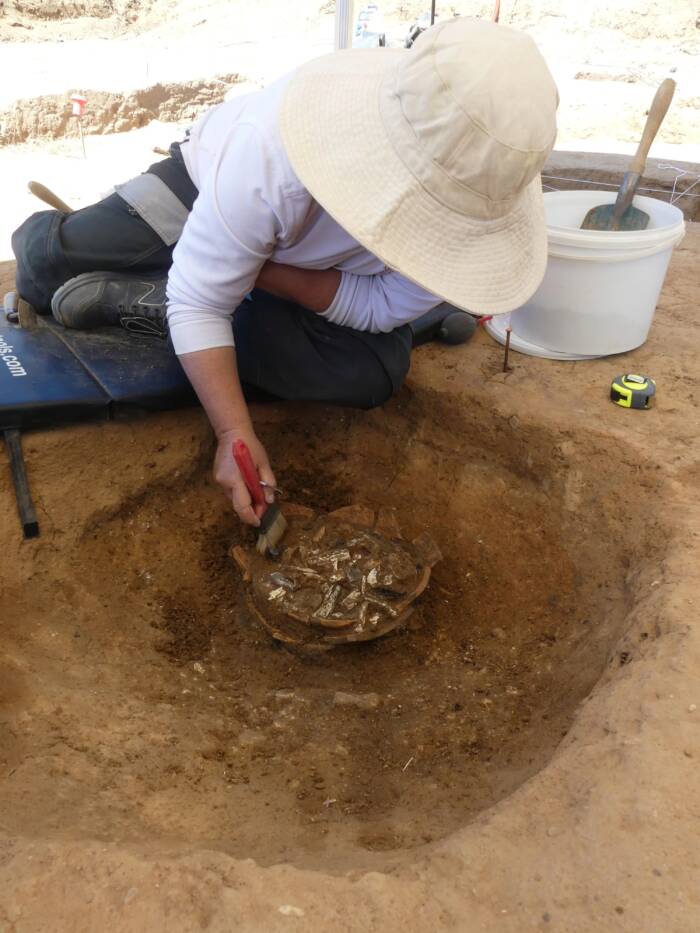
Éric Conrad, InrapThough the dead were burned, archaeologists still found the remnants of their bones.
During updates to a road along the French Mediterranean coast, near the ancient settlement of Olbia, archaeologists discovered evidence of an elaborate cemetery dating back to the Roman era. There, they found what remained of funeral pyres and grave goods, as well as an elaborate “libation” channel used to leave liquid offerings to the dead.
The necropolis, which may connect to other former funerary sites in the area, is a remarkable testament to how people in the region mourned their dead.
The Ancient Necropolis Of Olbia
According to a statement from the National Institute for Preventive Archaeological Research (Inrap), the funerary site near Olbia (in present-day Hyères, France) was detected during excavations ahead of a project to update a nearby road. During these digs, archaeologists found a necropolis stretching across roughly 8,600 square feet that was seemingly used between the first and third centuries C.E.
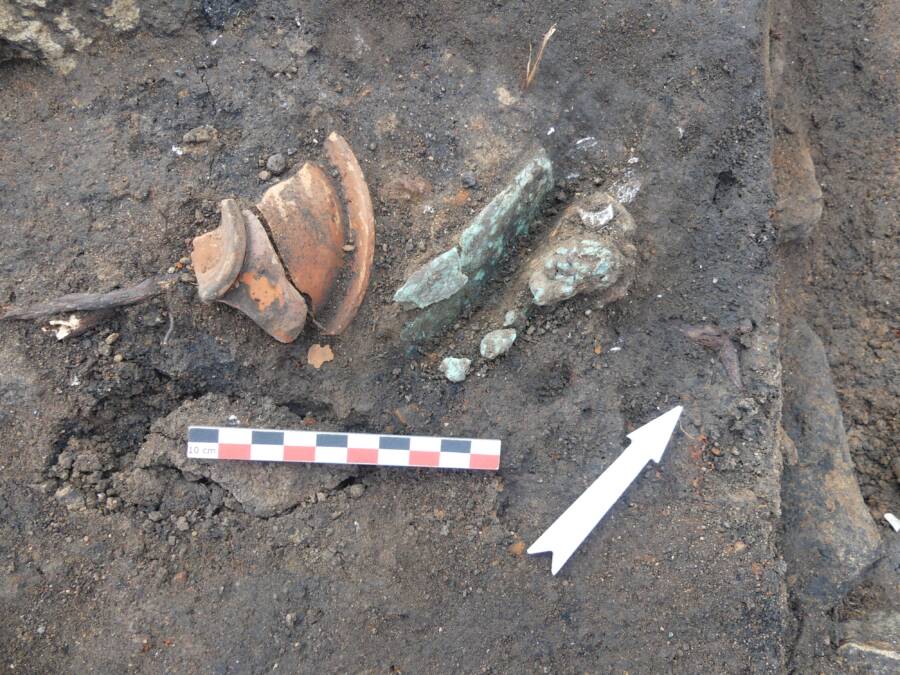
Aurélie Luciani, SDA VarA partially melted bronze object found at the site of an ancient funeral pyre.
Archaeologists believe that the site was used solely for cremation. They uncovered pits with reddened walls, seemingly from intense flames. Nails found alongside burned bones suggest that the dead were placed upon funeral pyres, where a “central depression” in the pits provided ventilation.
The deceased were thus seemingly placed on a pyre over a pit with pottery and other important personal belongings to accompany them into the afterlife. The pyre was then set on fire, which reddened the walls of the pit, destroyed the wood, cracked the bones of the corpses, and melted the glass and bronze objects that had been placed alongside them.
Some of these pyre sites also included unburned items, which suggested that they were used as burial pits once the fire died down. However, other pits were seemingly emptied, and the cremated remains were moved to another location. These pits were graves sometimes marked with a sandstone block. And in the final resting place of the dead, mourners seemingly left objects like glass perfume bottles and vases in their tombs.
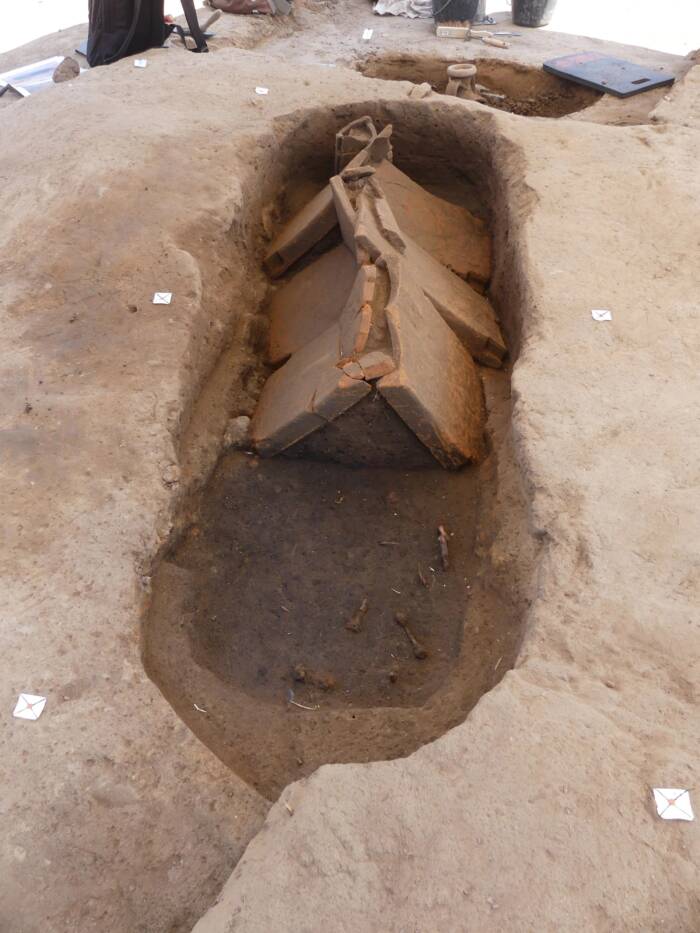
Sylvie Duchesne, InrapAn example of a pyre that was transformed into a tomb, complete with a roof.
But the ritual of mourning the dead didn’t end here.
How The Dead Were Mourned In Ancient Olbia
After the ritual of burning and burying the dead was complete, ancient people in Olbia seemingly turned next to pleasing the deities. To do so, they left behind items like perfume, coins, and lamps. But one of the most curious parts of the Olbia necropolis is a libation conduit.
According to Inrap, this “distinctive feature” of the necropolis was seemingly installed above the graves. Here, mourners could leave liquid offerings, including wine, beer, and mead.
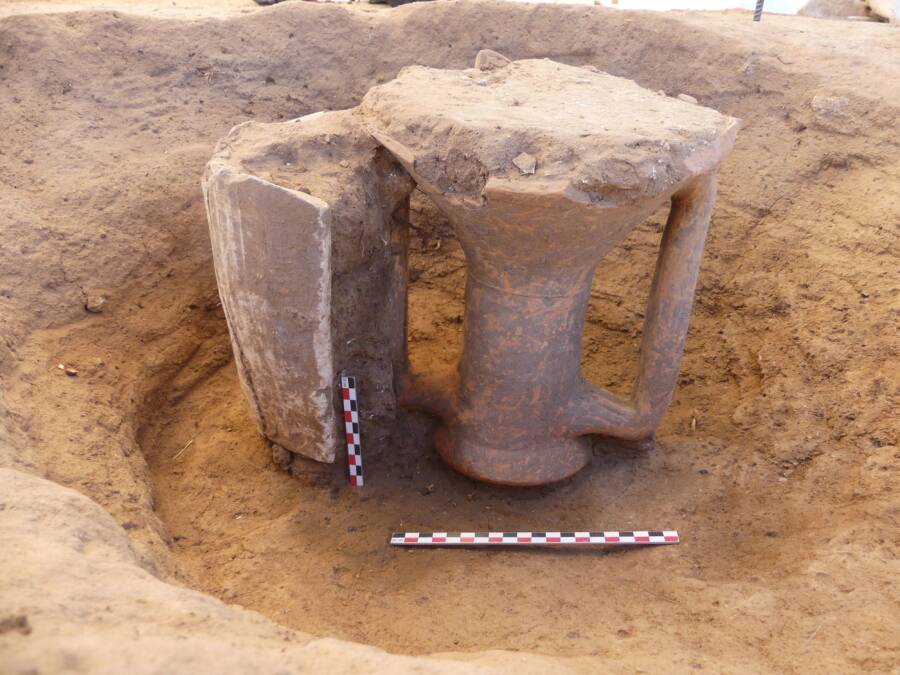
Tassadit Abdelli, InrapTwo “libation conduits” which were placed atop graves, and where mourners could pour liquids like beer and wine in a gesture to the deities.
These conduits, made from amphorae seemingly obtained through maritime trade, were possibly used to ensure the protection of the deceased in the afterlife. Alternatively, these liquid offerings may have been a way for mourners to honor the dead.
In any case, the necropolis found at Olbia seems to be one of many that once stretched along the French Mediterranean coast. Other burial areas were detected nearby in 2022 and 2023, thus suggesting “that an even larger area dedicated to the deceased existed in Roman times along a coastal road likely leading towards the city of Toulon/Telo Martius.”
Such discoveries are a fascinating look at the people who once lived in the area. According to Inrap, Olbia was a fortified colony founded in the fourth century B.C.E., and it was occupied until the sixth century C.E. Its citizens clearly had elaborate methods of honoring the dead, which archaeologists are still untangling.






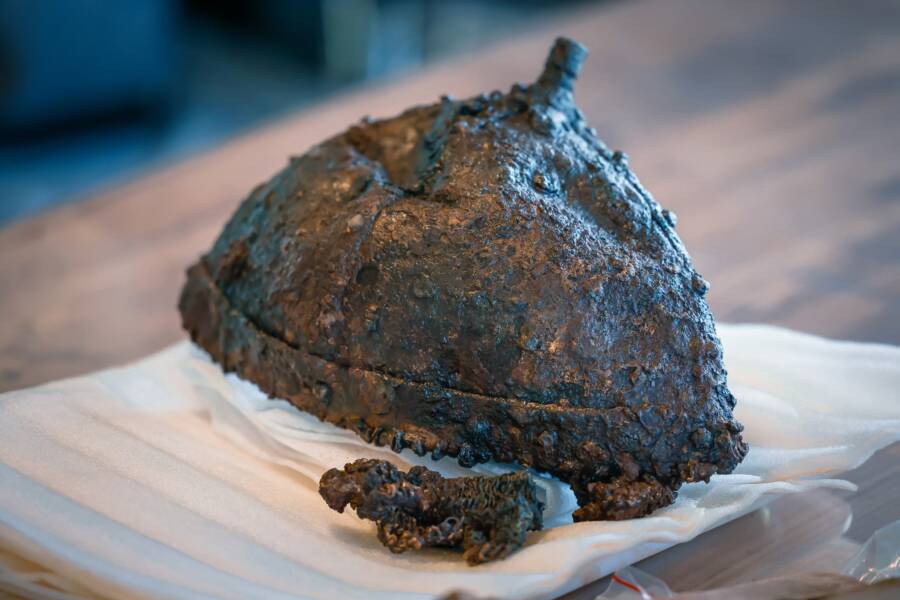






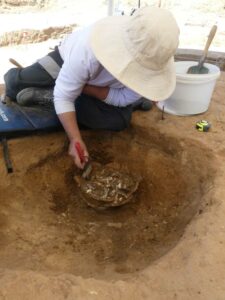





Post Comment